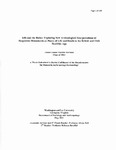| dc.rights.license | In Copyright | en_US |
| dc.creator | Herman, Felice Connor Fairfax | |
| dc.date.accessioned | 2011-09-22T19:21:22Z | |
| dc.date.created | 2011 | |
| dc.identifier | WLURG38_Herman_SOAN_2011 | |
| dc.identifier.uri | http://hdl.handle.net/11021/23157 | |
| dc.description | Thesis; [FULL-TEXT RESTRICTED TO WASHINGTON AND LEE UNIVERSITY LOGIN] | en_US |
| dc.description | Felice Connor Fairfax Herman is a member of the Class of 2011 of Washington and Lee University. | en_US |
| dc.description.abstract | In this paper, I examine four stone monuments in Britain and Ireland: Stonehenge in Wessex, England, Avebury in Wessex, England, Maes Howe in Orkney, Scotland, and Newgrange, in County Meath, Ireland. Stonehenge and Avebury are both well-known stone circles; the two megalithic tombs of Maes Howe and Newgrange are less famous, but provide interesting comparisons to these circles in dating and methods of construction, as well as use. My initial investigation of the architectural use of stone in these sites soon obliged me to reflect critically on recent archaeological thought about materials and cultural categories, especially ways in which the Neolithic British and Irish conceptually marked their places dedicated to the living and the dead. The Stonehenge Riverside Project (SRP) is a collaborative archaeological effort (initiated in 2002) that seeks to explain Stonehenge's relationship with its surrounding landscape and monuments. Aside from the general argument for stone representing death and wood life which derived from the SRP's hypothesis about the Stonehenge landscape, I argue for the dedication of these monuments to dead and not specifically ancestors, an expanded perspective for the importance of the concept of movement during the Neolithic, and the transition from the use of megalithic tombs to stone circles as places for the dead. Though each site varied in how the my revised SRP hypothesis was applied, I concluded that the celebration of life through feasting, the remembrance of the dead through monumental architecture, and movement between sites dedicated to both activities was of paramount importance to the Neolithic communities of Britain and Ireland. | en_US |
| dc.format.extent | 129 pages | en_US |
| dc.language.iso | en_US | en_US |
| dc.rights | This material is made available for use in research, teaching, and private study, pursuant to U.S. Copyright law. The user assumes full responsibility for any use of the materials, including but not limited to, infringement of copyright and publication rights of reproduced materials. Any materials used should be fully credited with the source. | en_US |
| dc.rights.uri | http://rightsstatements.org/vocab/InC/1.0/ | en_US |
| dc.subject.other | Washington and Lee University -- Honors in Archaeology and Anthropology | en_US |
| dc.title | Life and the Ruins: Exploring New Archeological Interpretations of Megalithic Monuments as Places of Life and Death in the British and Irish Neolithic Age (thesis) | en_US |
| dc.type | Text | en_US |
| dcterms.isPartOf | RG38 - Student Papers | |
| dc.rights.holder | Herman, Felice Connor Fairfax | |
| dc.subject.fast | Megalithic monuments | en_US |
| dc.subject.fast | Excavations (Archaeology) | en_US |
| dc.subject.fast | Great Britain | en_US |
| dc.subject.fast | Ireland | en_US |
| local.department | Archaeology and Anthropology | en_US |
| local.scholarshiptype | Honors Thesis | en_US |
